Can ocean alkalinity enhancement reduce atmospheric carbon dioxide?
We must urgently and dramatically reduce our carbon dioxide (CO2) emissions. However, even if we completely cut emissions tomorrow, the atmosphere will still hold the majority of the CO2 emitted over the past century. This will continue to affect the climate, so scientists are exploring how to enhance the natural, but slow, removal of CO2 from the atmosphere. At Dalhousie University in Canada, oceanographers Professor Katja Fennel, Dr Dariia Atamanchuk and Professor Ruth Musgrave are investigating the effectiveness and implications of ocean alkalinity enhancement, a CO2 removal technique that mimics the natural process of rock weathering.
Talk like an oceanographer
Biogeochemical model — a computational model of a system that takes physical, biological, geological and chemical processes into account
Brucite — a naturally occurring mineral composed of magnesium hydroxide
Carbon dioxide removal (CDR) — removing carbon dioxide from the atmosphere and ‘locking it up’ in a carbon reservoir, such as the ocean (in which case it is known as marine CDR)
Carbon reservoir — a natural environment that can store carbon dioxide over geological timescales
Ocean alkalinity enhancement (OAE) — a carbon dioxide removal technique in which ground rocks and minerals are added to seawater to increase its alkalinity
Rock weathering — the natural physical, chemical and biological processes that break down rocks
The need for innovative solutions to fight climate change has never been more urgent. Reducing carbon dioxide (CO2) emissions is key to addressing the climate crisis. However, the accumulated CO2 already in the atmosphere will continue to affect the climate even when we cut our emissions, and natural removal processes are too slow to make a difference in the next 100 years. So, scientists and policymakers are investigating methods to enhance natural processes that reduce atmospheric CO2 while CO2 reduction efforts continue.
Carbon dioxide removal (CDR) techniques remove CO2 from the atmosphere and ‘lock it away’ in carbon reservoirs. The ocean is one such reservoir, acting as an impressive ally in our battle against climate change. With remarkable efficiency, the ocean has already absorbed a substantial portion – between 25% and 40% – of the CO2 emissions generated by human activities. Scientists are now investigating ways to increase the ocean’s ability to absorb and store CO2, thereby reducing CO2 in the atmosphere. At Dalhousie University, oceanographers Professor Katja Fennel, Dr Dariia Atamanchuk and Professor Ruth Musgrave are studying the effectiveness and implications of one form of CDR – ocean alkalinity enhancement.
What is ocean alkalinity enhancement?
Ocean alkalinity enhancement (OAE) represents a novel approach to removing atmospheric CO2 and converting it into stable forms of carbon that will be stored in the ocean for thousands of years. It is a technique that mimics the natural process of rock weathering. When CO2 reacts with water vapour in the atmosphere, it forms carbonic acid (CO2 + H2O → H2CO3). This mildly acidic solution falls as rain, causing slow chemical weathering of rocks. Over time, minerals in the rocks break down to form alkaline solutions (e.g., limestone + carbonic acid → calcium bicarbonate; CaCO3 + H2CO3 → Ca(HCO3)2) which rivers transport to the ocean.
“Atmospheric CO2 enters the ocean via its surface because it easily dissolves in seawater,” explains Dariia. “This dissolved CO2 also forms carbonic acid, and historically, carbonic acid in the ocean has been neutralised by alkaline waters entering from rivers.” However, as human activities have exponentially increased the amount of CO2 in the atmosphere and, therefore, the amount of CO2 dissolved in the ocean, natural rock weathering has struggled to provide sufficient alkaline waters to neutralise this excess carbonic acid.
OAE mimics the natural rock weathering process by artificially introducing ground rock into the ocean. The increase in alkalinity converts CO2 dissolved in seawater into stable bicarbonate ions which will remain ‘locked’ in the ocean for around 10,000 years. The resulting reduction in ocean CO2 causes more atmospheric CO2 to be drawn into the ocean to reestablish equilibrium. In this way, OAE forces the ocean to absorb more atmospheric CO2 and to convert it into stored, stable carbon.
“It’s important to understand that OAE is not a substitute for reducing greenhouse gas emissions,” emphasises Katja. “It is essential that we urgently reduce CO2 emissions if we are to avoid the worst impacts of climate change.”
What do the Halifax Harbour OAE trials involve?
Since 2023, scientists have taken part in field trials of OAE in which the climate-tech company Planetary Technologies is releasing brucite into Halifax Harbour in Nova Scotia. This marks a significant step in exploring the feasibility and implications of OAE in a realistic setting. Initially, over a period of six hours, Planetary Technologies released 2.3 tonnes of brucite into the harbour, to which the scientists added a pink dye. “The dye allowed us to track the brucite from above using a drone as it spread through the harbour,” explains Dariia. “We followed the plume by boat, took water samples and used sensors to measure the water’s alkalinity and the concentration of dye as the plume spread.” By taking samples from different depths in the water column and towing instruments behind the boat, the research groups led by Dariia and Ruth built a 3D map of added alkalinity in the harbour.
Over the subsequent two months, the teams closely monitored alkalinity levels as Planetary Technologies added a total of 278 tonnes of brucite to the harbour. Katja’s research group developed detailed biogeochemical models to predict the distribution of alkalinity throughout the trial. This model integrated fundamental ocean physics with extensive observations of water chemistry, allowing the researchers to investigate how the addition of brucite altered the harbour’s water chemistry.
While the Halifax Harbour trials are investigating the potential of OAE to mimic the natural process of rock weathering to draw down atmospheric CO2, the ecological impacts of adding large quantities of brucite (or other alkaline minerals) to the ocean are still uncertain. A larger research team is now investigating the effects of added alkalinity on marine ecosystems. If OAE is found to be feasible and safe for ecosystems, it would then have to be scaled up significantly for meaningful removal of atmospheric CO2. An additional challenge is that a cheap and accessible source of ground alkaline minerals is required for it to be economically viable.
As humanity fights against the climate crisis, the quest for innovative solutions is essential, ensuring that our actions today pave the way for a sustainable tomorrow.
 Professor Katja Fennel
Professor Katja Fennel
Dr Dariia Atamanchuk
Professor Ruth Musgrave
Department of Oceanography, Dalhousie University, Nova Scotia, Canada
Field of research: Oceanography
Research project: Investigating the impacts and effectiveness of ocean alkalinity enhancement (OAE)
Funders: Carbon to Sea Initiative, Thistledown Foundation, Natural Sciences and Engineering Research Council of Canada (NSERC), ICONIQ Impact’s Ocean Co-Lab
About Oceanography
Oceanography is the scientific study of the ocean. It encompasses a wide range of disciplines, from biology and chemistry to physics and geology, and applies knowledge and techniques from these fields to marine systems. “Compared to the atmosphere, the ocean is still relatively poorly observed,” says Ruth. “For example, the movement of water in the ocean spans a huge range of scales, from currents that act over thousands of kilometres all the way down to centimetre-scale swirling eddies. Ocean life, from tiny plankton to gigantic whales, lives and dies within these currents, with different ecologies determined by the complex interplay between physics, chemistry and geology.”
Studying the ocean is crucial for predicting and mitigating the impacts of climate change. “It is key to being able to better predict how our climate will change in the future, and how species both in the water and on land will be affected,” says Ruth. “The ocean may provide us with an opportunity to undo some of the harm that we have done to Earth’s climate.” However, a great deal more research is needed before marine CO2 removal techniques (such as OAE) and technologies are scaled up. “For this,” says Ruth, “we need more oceanographers.”
Pathway from school to oceanography
At school, aspects of oceanography and marine science will be taught in chemistry, physics, biology, geology and geography. Gaining a solid foundation in mathematics will also be useful.
Oceanography is an interdisciplinary field. At university, a degree in oceanography, marine science, physics, maths, chemistry, geology, marine biology, engineering or computer science could lead to a career in oceanography.
Get involved with marine conservation groups or environmental organisations and look for summer internship programmes offered by universities or marine science institutions to gain hands-on experience in oceanography. “For example, through DIY Oceanography (www.tos.org/diy-oceanography), ocean enthusiasts help build low-cost instruments for scientists,” says Dariia.
Dalhousie University runs a free ‘Adopt-a-Float’ programme for schools (www.adopt-a-float.ocean.dal.ca). “Young people can learn about physical and biogeochemical ocean properties and have some fun along the way!” explains Katja. Classes can name a float containing oceanographic sensors, track its journey though the ocean and receive its measurements as it collects data (including water temperature, salinity and pH). This hands-on experience can cultivate a deeper appreciation for ocean science and inspire future generations of researchers.
Explore careers in oceanography
Opportunities abound for the next generation of oceanographers. Beyond traditional research careers, avenues in sustainable energy (for example, generating wave and tidal power) and ocean data and technology industries offer promising prospects for aspiring oceanographers.
The Oceanography Society (www.tos.org/education), the Canadian Meteorological and Oceanographic Society (www.cmos.ca/site/education/cmos?nav=sidebar), the National Oceanography Centre (www.noc.ac.uk/education), and the National Oceanic and Atmospheric Administration (www.noaa.gov/education) all have a wealth of educational and career resources.
Reference
https://doi.org/10.33424/FUTURUM509
Rustam, Mat and Ruby recover the ecoCTD Edmundo and Rustam prepare ocean drifters for deployment
About ocean modelling
Ocean modelling refers to the development and use of computer-based simulations to replicate and predict various aspects of ocean behaviour and dynamics. These models are sophisticated mathematical representations of the ocean environment, encompassing physical, chemical, geological and biological processes. Ocean modelling plays a pivotal role in increasing our understanding of ocean systems.
“Ocean modellers develop computer models that can simulate ocean conditions with a high degree of realism and that can be used to generate forecasts,” explains Katja. “You can think of these as the ocean analogues to weather forecast models, like the animations of expected temperatures, winds and rain you see on TV.” For example, Katja’s Marine Environmental Modelling Group at Dalhousie University produces forecasts of water temperature and salinity in Halifax Harbour: memg.ocean.dal.ca/memg/forecasts
Katja’s team’s biogeochemical models are crucial for evaluating OAE methods. By accurately simulating the movement of water and the behaviour of its various constituents, such as nutrients, plankton and dissolved CO2, these models provide valuable insights into the potential impacts of adding brucite to seawater. Ocean models are rigorously tested through an iterative process of prediction and evaluation, ensuring their accuracy and reliability. To improve a model, ocean modellers evaluate their predictions against observed data and quantify how accurate the predicted outputs were. This allows them to identify and pinpoint shortcomings in the model that need to be improved. If the values of a newly generated prediction match the observations better, it suggests that the model does a better job of modelling the ocean system being investigated. This iterative refinement process allows researchers to continually enhance the model’s performance and predictive capabilities.
Meet Katja
What inspired you to become an oceanographer?
Growing up by the Baltic Sea, I swam in the ocean every summer and tasted its salty water. Some of my earliest memories are of my curiosity about the sea. At university, I obtained equivalents of bachelor’s and master’s degrees in mathematics and a PhD in marine biology. For my PhD, I developed biogeochemical models of nutrients and plankton in the Baltic Sea. Becoming an oceanographer and combining my interests in biology, chemistry and physics with my skills in mathematics and computer programming has been a dream come true.
What is your favourite fact about the ocean?
The ocean holds 50 times more CO2 than the atmosphere. This means that a relatively small shift in the ocean’s inventory of dissolved CO2 can mean a big change for the atmosphere. Scientists are pretty sure that redistributions of CO2 between atmosphere and ocean were responsible for the glacial-interglacial cycles of the past.
What do you enjoy doing in your free time?
I love to hike, read, draw, paint, cook and travel.
Katja’s top tips
1. Embrace STEM subjects and develop your quantitative skills.
2. Don’t shy away when things get challenging – the bigger the challenge, the greater the reward.
3. Don’t let anyone ever tell you that you can’t do something you want to do. The only way to find out if you can do something is to try.
About ocean technology
Ocean technology encompasses the diverse array of tools, sensors and platforms designed to explore, observe and monitor the marine environment. These technologies play a crucial role in advancing our understanding of the oceans and addressing pressing ocean challenges. “Ocean technology offers us access to continuous observations of what is happening to the water chemistry during OAE,” explains Dariia. For example, her team uses an autonomous underwater vehicle equipped with pH, salinity and temperature sensors to better understand varying water properties in Halifax Harbour, and a robotic boat equipped with air and water CO2 sensors to monitor the uptake of CO2.
Collaborations between academic researchers and ocean technology-based industry partners play a pivotal role in moving oceanographic and climate mitigation research forward. For example, the OAE trial in Halifax Harbour was conducted in partnership with Planetary Technologies (www.planetarytech.com), a company dedicated to developing sustainable CO2 removal methods. “Planetary Technologies set up the experimental infrastructure and released the brucite into the harbour,” says Dariia. “Pro-Oceanus (www.pro-oceanus.com) provided a CO2 sensor for integration into the Blue Robotics’ (www.bluerobotics.com) robotic boat that will be surveying the harbour as the trials continue.”
Scientific inquiries drive innovation in ocean technology. “The interest in marine CDR has shown the true catalytic value of urgent scientific questions on technology development,” says Dariia. “We have an unprecedented number of start-up companies developing new approaches and technology.” This symbiotic relationship between scientific curiosity and technological advancement promises exciting progress in ocean science.
Meet Dariia
What inspired you to become an oceanographer?
My path to oceanography was not straightforward. Growing up in a town in Ukraine, oceanography and marine sciences were never on my radar. At university, I studied a bachelor’s in chemistry and then a master’s in organic chemistry. With that chemistry background, I dreamt of applying my knowledge to design and make new chemical substances that would help cure diseases. All that changed when I was offered a PhD position in Sweden studying marine chemistry. That’s when I discovered the world of ocean science and ocean technology. I immediately fell in love with everything ocean-related and realised I could contribute to society by uncovering the ocean’s enormous role in our lives.
What do you most enjoy about your work?
I love working with a team of motivated and passionate people. Those are the kind you will meet in oceanography. Also, I love going to sea on research expeditions. These expeditions are usually hard work but always fun. Getting to meet new people from all over the world never gets old.
What is your favourite fact about the ocean?
It takes about 1000 years for the water in the ocean to go around the globe and return to the same spot.
What are your hopes for the future of your research?
I hope we will be able to answer the burning questions about the viability of different CDR approaches. I want to see society cutting CO2 emissions, developing green economies and investing in sustainable energy sources. Our research into OAE will only matter if all these steps are taken simultaneously.
What do you enjoy doing in your free time?
I love to bake, do backyard gardening and sports. I also enjoy travelling to new places and experiencing the diverse and rich cultures of the world.
Dariia’s top tips
1. Find the corner of oceanography that you most enjoy – it encompasses everything from marine microbes to ocean currents to ancient ice cores.
2. Don’t give up when things get hard – persevere through challenges because difficult things often haven’t been done before, so you can be the first.
About physical oceanography
Physical oceanography is the branch of oceanography that focuses on the physical properties and processes of the ocean. It involves the investigation of various physical phenomena, such as currents, waves and tides, and temperature, salinity and density distributions.
Ocean mixing, a fundamental physical process, blends seawater of different properties and plays a crucial role in redistributing heat, salinity, oxygen and CO2 throughout the ocean. “For example, on a warm sunny day, the surface of the ocean warms up,” explains Ruth. “That heat will slowly penetrate deeper into the ocean at a rate that is determined by the mixing of warm surface waters with cooler subsurface waters. As a result, the vertical distribution of heat within the ocean is largely determined by mixing.” The rate at which CO2 fluxes into or out of the ocean depends on ocean mixing and the amount of CO2 in the water and air. “On still days, little gas is exchanged between the ocean and atmosphere, while on windy days, there is a lot of turbulence in the upper ocean which enhances air-sea gas exchange.”
Ocean mixing can also disrupt the effectiveness of OAE, for example if brucite is mixed into deeper waters where it can no longer interact with the atmosphere. Understanding the complex role of ocean mixing is crucial for accurately assessing the potential of OAE for reducing atmospheric CO2 levels. However, ocean mixing is primarily driven by turbulence which occurs at small scales, making it extremely challenging to observe and quantify. But its profound impact on the ocean’s physical and chemical properties means it is important for scientists to understand it.
Meet Ruth
What inspired you to become an oceanographer?
In high school, I wanted to be an astrophysicist, so I went to university to study a bachelor’s degree in physics. However, as I became increasingly aware of climate change, I wanted to direct my career towards a field where I could help understand and tackle this problem. I did an honours year in mathematics and atmospheric science, where my interest in fluid dynamics increased. Oceanography seemed like a field where I could apply my physics knowledge to a tangible and important problem, and I liked the sound of going to sea on a research boat. So, I did a PhD in physical oceanography where I discovered that the blend of theoretical and practical work is very rewarding and that research expeditions are great adventures!
What do you most enjoy about your work?
Nothing beats the thrill of looking at a new dataset fresh off an instrument recovered from the ocean. Trying to decrypt the measurements and infer something about what is happening in the ocean is like a puzzle.
What is your favourite fact about the ocean?
Deep within the ocean, there are internal ‘waves’ between lighter surface waters and dense deep waters which, in energetic regions, break like waves on a beach, causing extensive turbulence deep in the ocean.
What are your hopes for the future of your research?
I hope to improve our understanding of ocean mixing so that it can be better represented in climate models and OAE models.
What do you enjoy doing in your free time?
I like growing plants, both to eat and look at. Through the winter I grow vegetables hydroponically and in the summer I grow outdoors. I also love to cook when I have the time.
Ruth’s top tip
Work hard with determination and humility.
Do you have a question for the team?
Write it in the comments box below and the team will get back to you. (Remember, researchers are very busy people, so you may have to wait a few days.)
Discover how a statistical ecologist is using mathematics to learn more about the ocean:
www.futurumcareers.com/can-statistics-help-to-uncover-the-oceans-secrets

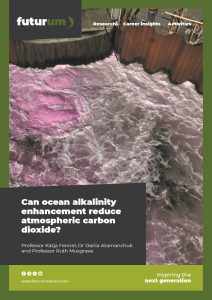
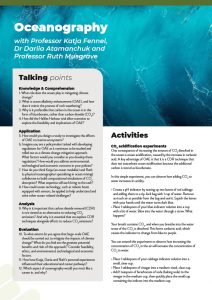



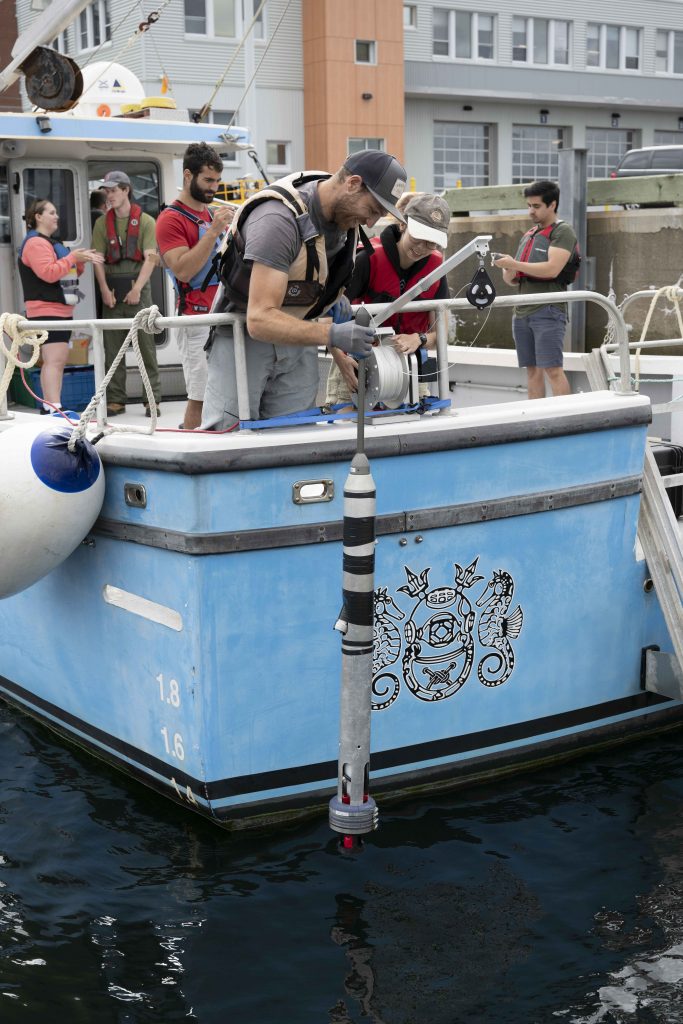
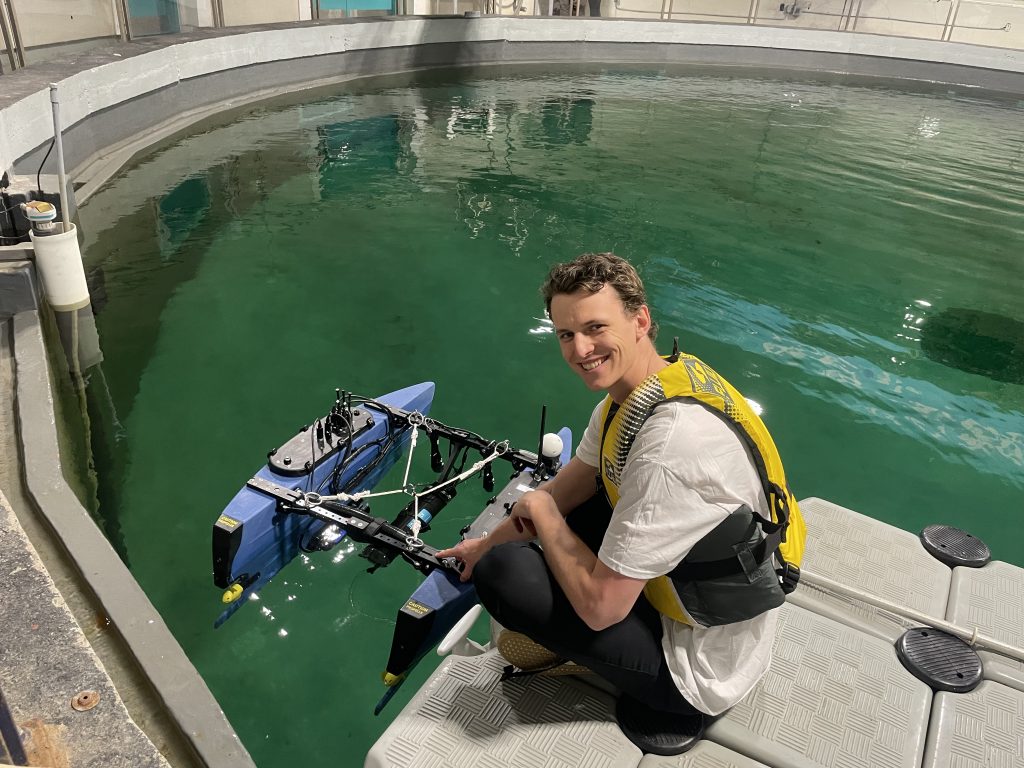





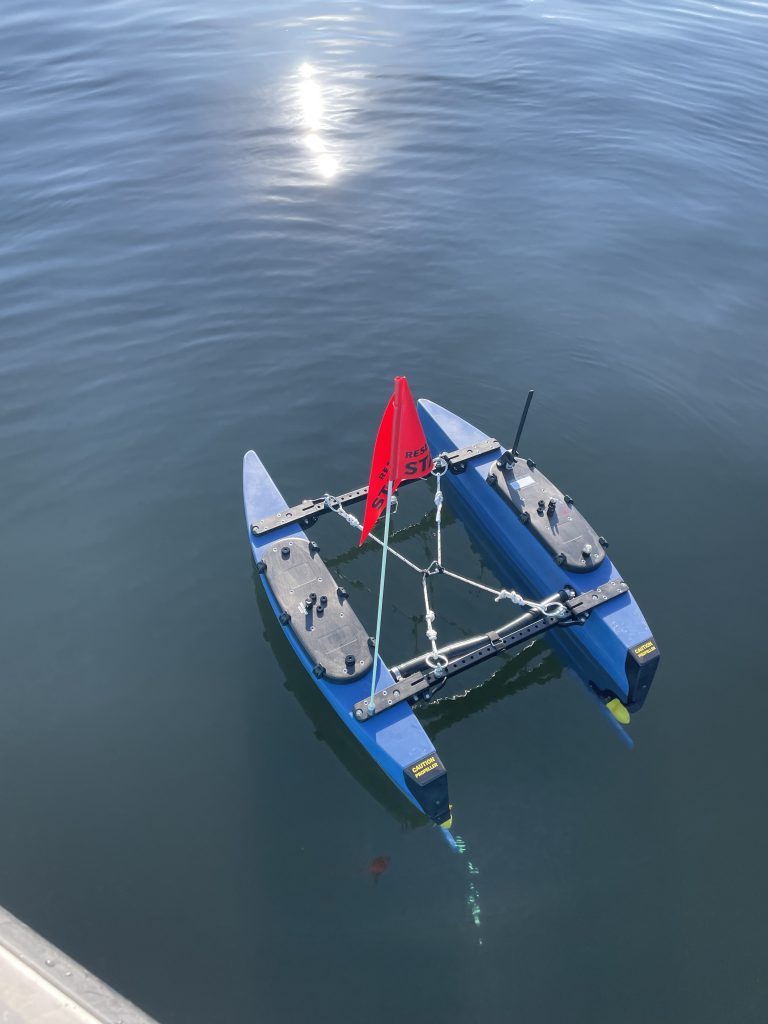
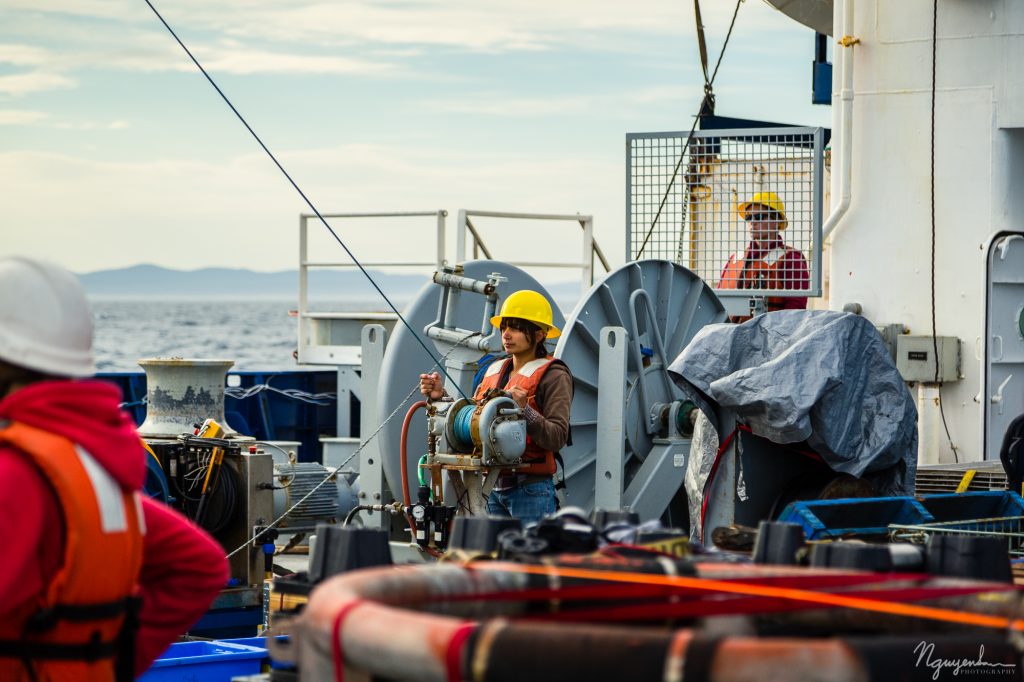
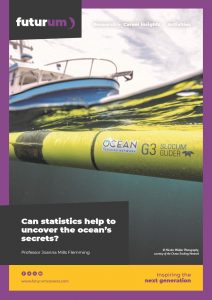
0 Comments